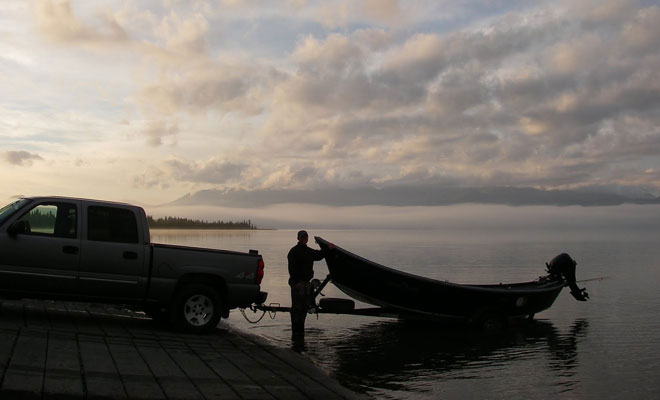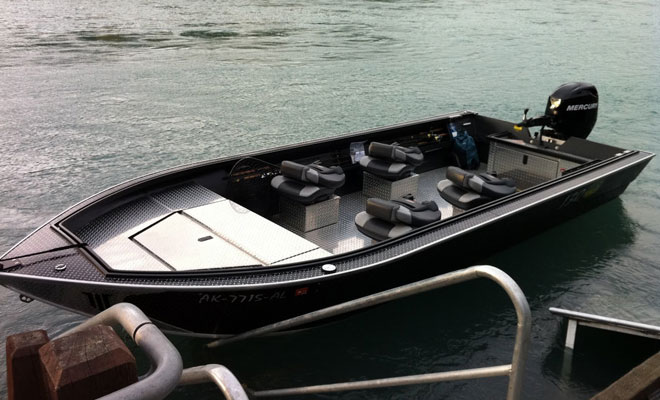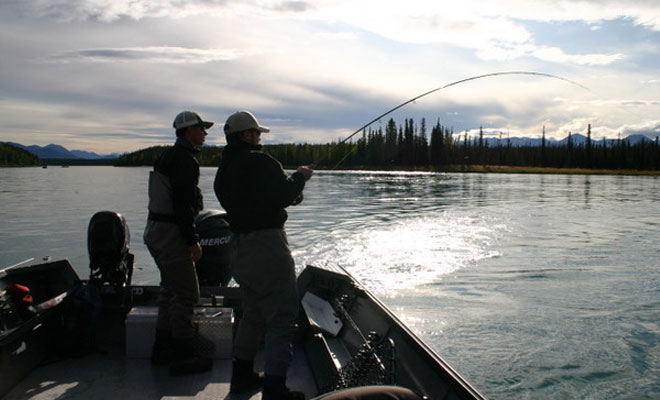
Story & Photos by Jeremy Anderson
Taking care of your boat is a very important part of recreating on the water, keeping you safe, having fun and making your day on the water stress-free. If you don’t take care of your boat things start to break at the most inconvenient time. I always have a list running of things that need to get done and dates I need to accomplish them by so I keep my attention on the recreating aspect of boating, not the fixing or organizing part of maintenance.
In the spring it is essential to do a full inspection of your boat and trailer. I always start with the trailer because I can’t take my boat anywhere unless my trailer is safe to tow. Then I move to the boat and check inside and out, looking for any red flags. Check over everything and make sure it all is working properly to avoid problems during the boating season.
With your trailer start by checking all the lights and electrical cords. If there any wires are exposed or frayed, replace before your season starts instead of during the season, when it cuts into your fishing time. Next I like to check the grease and bearings in the hubs of the axle. If there is water in the hubs you will need to pull everything apart to inspect and replace as needed. If the grease looks like the same color it originally was and it is still thick you are probably good to just add some more grease until filled. You can also take your trailer in and a shop will happily do this for you. Check your tires and make sure they are wearing evenly. If they need to be rotated do it when the tires are off (checking your hubs). Finally check that your boat straps are still in good condition to keep your boat affixed to the trailer properly.

With your boat always start with a hull inspection, especially on used, older boats. Believe it or not you could have a pinhole, which gives a small leak. It happened to me with my drift boat once and it was just from the wear and tear of pulling the boat onto shore and scraping a few rocks occasionally. Next I work to the inside of the boat. If there is electrical in the boat test everything and look for potential issues such as wires rubbing, loose connections and cracked casings on wires. After the electrical (which usually takes the longest) I then start looking at the floor, railings and trays to make sure there are no cracks in the metal welds and that all screws / rivets are tight. I like tomake sure all my ropes, the anchor system, straps and seats are in good working order. After the boat inspection and repairs it is time to give your motor a full inspection. Check and/or change oil and lower-unit grease and the spark plugs; look for loose wires, charge the battery and check the propeller or jet is okay. Once again, you’re doing all this so you avoid issues in the midsummer.
During the season there is ongoing maintenance that needs to be done on a regular basis. Every 100 hours you should be changing your oil, oil filter and lower -unit grease. As you use your motor at high RPMs and hit waves or other people’s wakes, things tend to get shaken up, loosened up and in general, beat up. So midseason I always do a boat inspection, just like in the spring. Often we will find a few things to take care of but usually everything is in pretty good working order because of your in-depth exam earlier in the year. A lot of times you might have to replace zip-ties holding wires together, ropes and things that get worked hard throughout the season.

During the season it is also important to organize your gear on the boat. Every item has its place for easy access. Safety gear such as life jackets, whistles and fire extinguishers should be very accessible and always in good working order. Tackle boxes, fishing equipment and personal items can easily be organized where they are easy to get to and out of the way. The most annoying (and dangerous) thing in the world is tripping over things in the boat when you should just be worrying about having fun on the water and catching fish. Be strategic about where you put things and it will help you along the way.
In the fall it is important to do a nice clean on your boat and write a list of things that need to be done before your first trip next spring. Putting a good cover on your boat, using water treatment for your gas and making sure your boat is dry is a really good start for boat-storage planning. Also I always change my lower-unit grease and motor oil in the fall. It is a really good habit to get into so you know if you have any seals leaking in the lower unit. If you have water in your lower-unit grease and it freezes over the winter it can damage your lower unit. At the very least drain your lower unit and check for water. If you have water you can fix it right away or in the spring. Also at the end of each day’s fishing in the fall I start up my motor to blow the water out of the system after I take the boat out of the river. It prevents your water intake and exit lines from freezing at night and then having a rough start the next cold morning (not having your motor dispensing water out the back when you start it).
If you take the steps written above it will help you with getting your boat on the water and keeping it running smoothly. You don’t have to follow the steps listed above exactly, but I highly suggest having a plan that works for you to make your boating experience simple, safe and fun. Keeping your boat’s items organized so everything has its place allows you to have a thought-out spot for things instead of stuff getting in the way all day long. Have fun out there on the water this next summer!
Jeremy Anderson is a contributing writer for Fish Alaska magazine and co-owner of Alaska Drift Away Fishing. His passion for experiencing the Kenai River trout fishery with others is what keeps him on the water. You can find out more about Jeremy and trout fishing the Kenai River at www.guidekenairiver.com.
